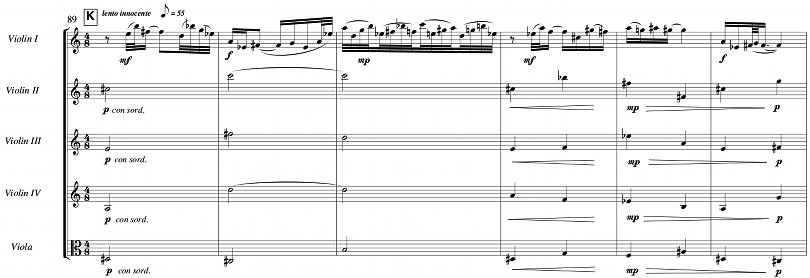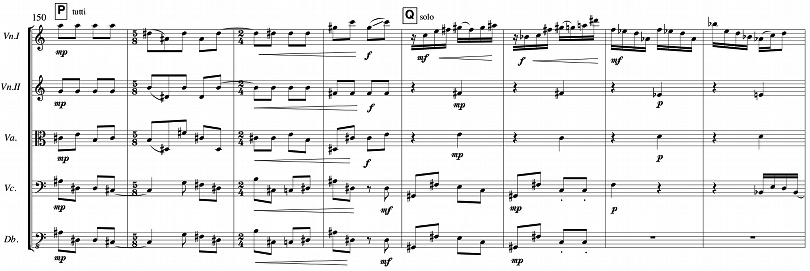Concerto for Violin and Strings

La Serenissima takes its starting point from Vivaldi’s L’Estro Armonico, the A minor concerto for violin and strings Op.3 No.6. It follows the approach of Nigel Morgan’s Gloria in 12 parts, based on the Gloria a 12 by Giovanni Gabrieli. In both pieces the music generally observes a similar play of sound and silence, and in some instances the original rhythm as well. Such a practice has its antecedents, notably in Mozart’s re-workings of symphonies by C.P.E. Bach.
Vivaldi’s ordering and dimensions of solo and tutti found in his Op.3 No.6 are followed with some precision in the overall structuring of the work. The solo violin part plays throughout as leader / conductor alternating with solo passages. The first movement takes a pulsing quaver beat, which in the tutti sections are either sub-divided into mixtures of quavers and semiquavers or inserted variously with rest lengths to create a tapestry-like rhythmic accompaniment. The solo passages contain a mixture of both approaches.

La Serenissima II
It is in its harmonic language that La Serenissima engages most experimentally with the present day. This is one of a number of pieces including The White Light of Wonder and String Trio that explore novel approaches to harmony as a sequence of musical objects. Chords are created from streams of pitch material generated by white-noise algorithms. In La Serenissima sixteen such chord objects are ‘in play’, arranged and ordered in different ways throughout each movement of the piece. The challenge was to fashion from such objects solo violin figures that could resonate with Vivaldi’s own.


La Serenissima III
The third movement follows without a break and begins to resemble from the outset Vivaldi’s own final allegro. The structural dimensions of tutti and solo passages are followed closely and the rhythmic language rarely strays from Vivaldi’s vocabulary. In the last 35 or so bars Vivaldi’s original rhythmic scheme is present in all parts. The harmonic rhythm imitates Op.3 No.6 but the harmonic content is wildly different.
The composer writes: In November 2013 I made my first visit to the city of Venice,often known as La Serenissima. I had long wanted to experience its magic and was not disappointed. Although music is no
longer as important and prolific in the city’s life as in past centuries, it is difficult to ignore the legacy of Monteverdi and Vivaldi: the latter’s music being admired and arranged by Bach and Handel for the daring of its harmonic invention.

La Serenissima – for Violin and Piano
La Serenissima is the first complete composition for concert performance wholly written using the Opusmodus music system and language itself developed in the city of Venice by the Polish composer Janusz Podrazik.
Downloads
La Serenissima full score [pdf]
La Serenissima parts [zip]
La Serenissima for violin and piano [pdf]
La Serenissima reference recording [mp3]
